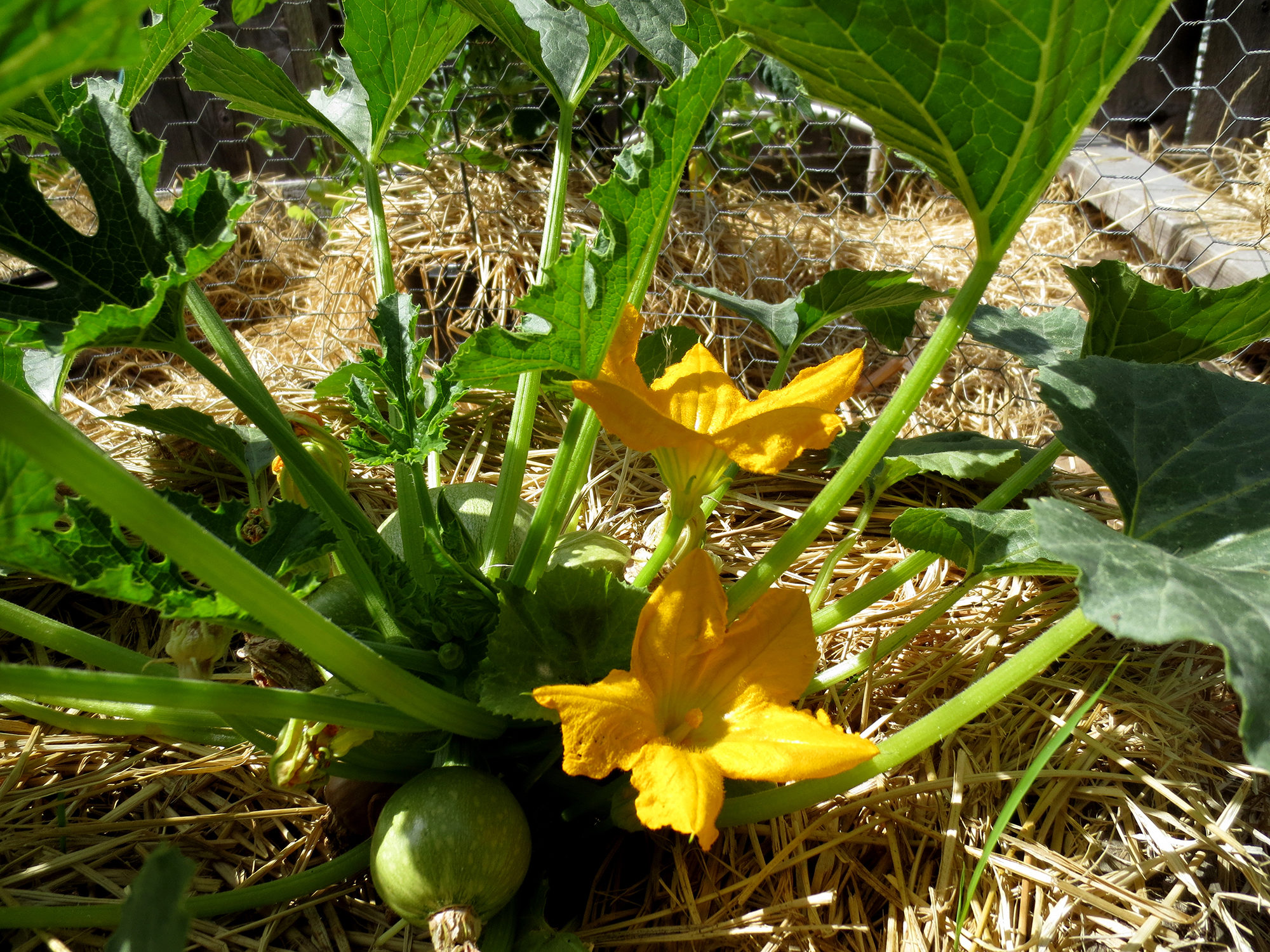Sometimes customers report that they have lovely lush squash or cucumber plants, but they get a small harvest. They say that small fruits form, but then they rot and fall off.
 The problem is one of pollination. The ‘small fruits’ are really just ovaries that will not form real fruits until they are pollinated. The ovaries are present under the female flowers and will only turn into fruit if the pollen from a male flower pollinates them. This pollen can come from a male flower on the same plant or from any other male flower of a plant in the Cucurbit family. (The Cucurbit family includes cucumbers, zucchinis, summer squash, winter squash, pumpkins and melons.) All it takes is a bee or another insect to roll around in a male flower and then do the same in the female flower.
The problem is one of pollination. The ‘small fruits’ are really just ovaries that will not form real fruits until they are pollinated. The ovaries are present under the female flowers and will only turn into fruit if the pollen from a male flower pollinates them. This pollen can come from a male flower on the same plant or from any other male flower of a plant in the Cucurbit family. (The Cucurbit family includes cucumbers, zucchinis, summer squash, winter squash, pumpkins and melons.) All it takes is a bee or another insect to roll around in a male flower and then do the same in the female flower.
Sometimes, because of cultural conditions, your plant won’t produce male and female flowers that are open at the same time. Or maybe you only want to grow one plant, or you don’t have the right pollinators in your garden. Don’t despair. You can have a hand in this pollination business. First, identify the male and female flowers.
Second, pick a male flower and gently rub the center of it on the centre of a female flower or flowers. You can use one male to pollinate a few females. Remember, it can be from any plant in the Cucurbit family. Third, take the used male flower to the kitchen and stuff with ricotta cheese, bread it and pan fry. But seriously, if you are going to make stuffed squash blossoms use the male flowers so you don’t reduce your harvest of fruits.
Now you know how to have a record Cucurbit harvest this year.
Saving Seed
As you have learned, cucurbits cross-pollinate very easily. This is handy if you want to increase your harvest. Not so handy if you want to save your own seed. The female flower that’s pollinated will form the correct variety of fruit. You’ll get an Italian zucchini even if the pollen came from a male pattypan flower. If you were to save the seed and grow it out next year however, you probably would get something quite different.
You will need to leave the fruits on the plants until the seeds are fully formed and ripe. This is beyond eating quality. It can be fun to grow out these crosses and join the centuries old tradition of plant selection!
–Thanks to Kassenhoff Growers for these tips


